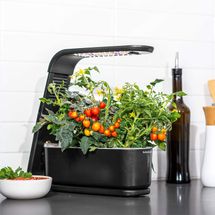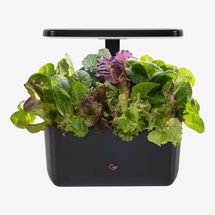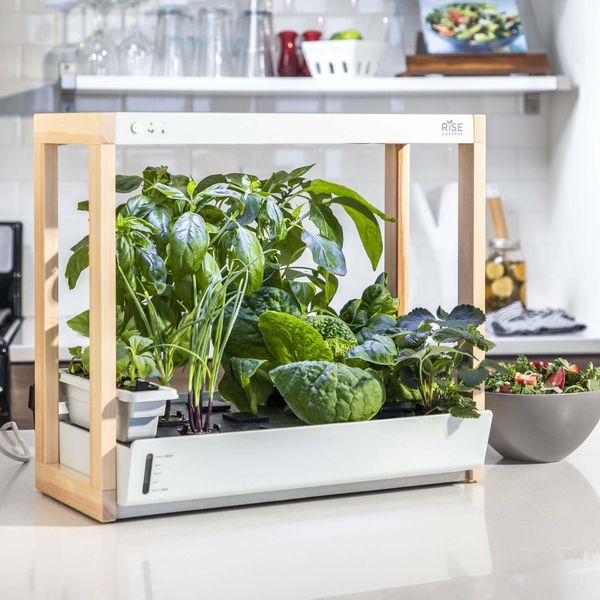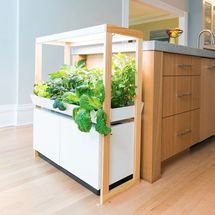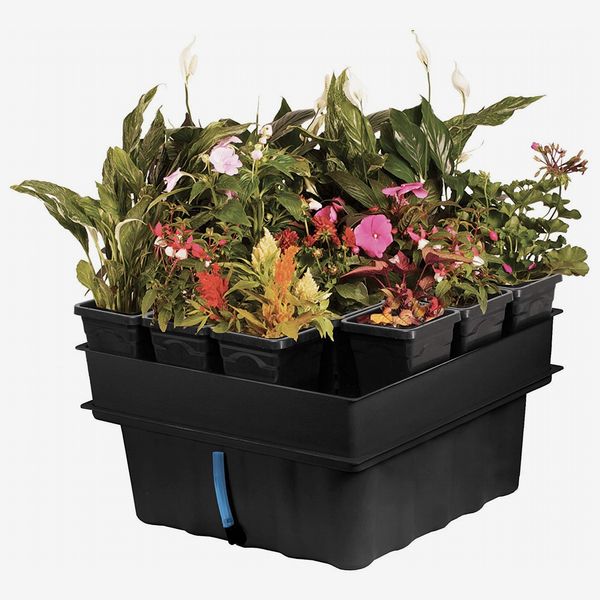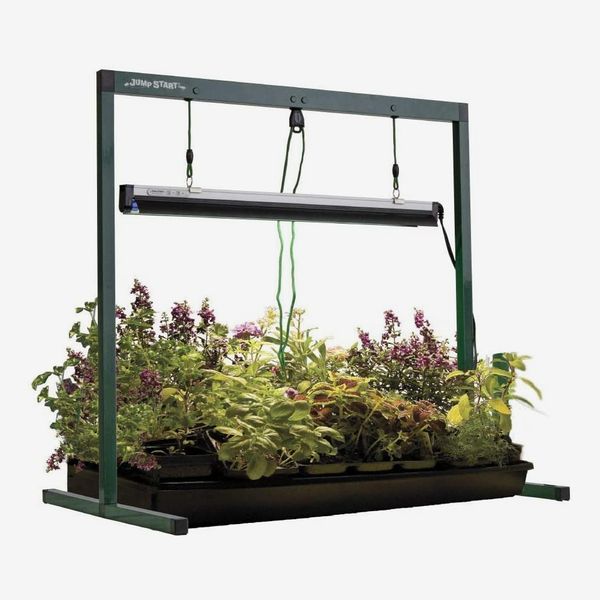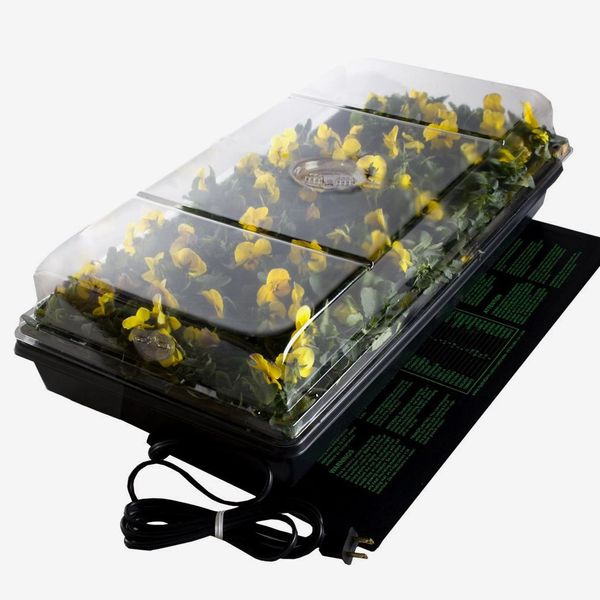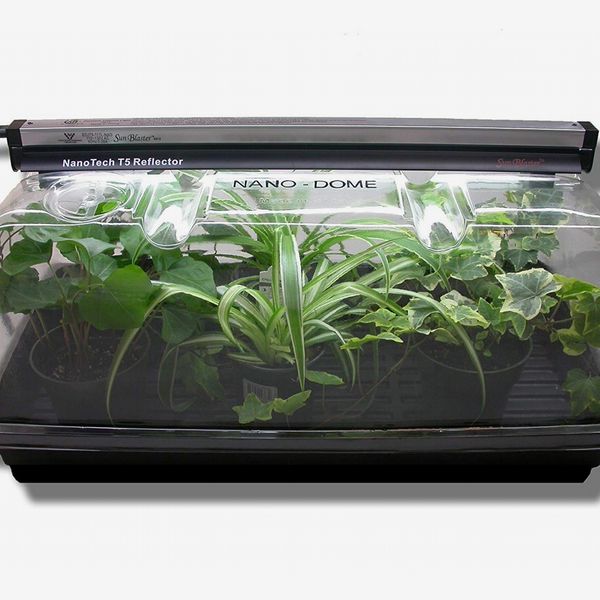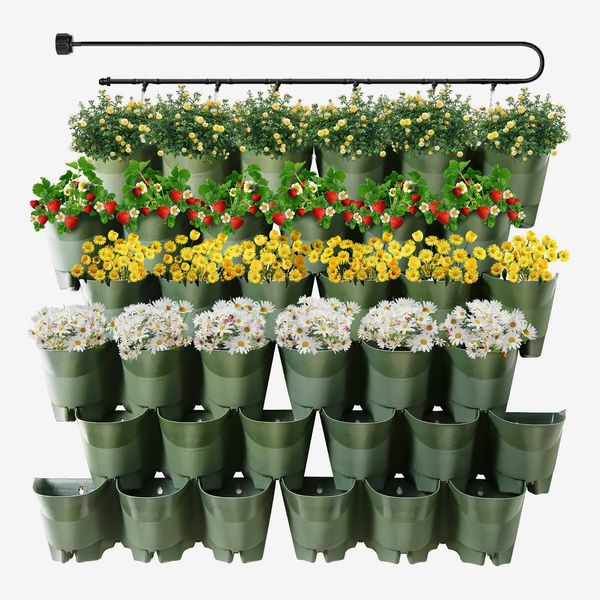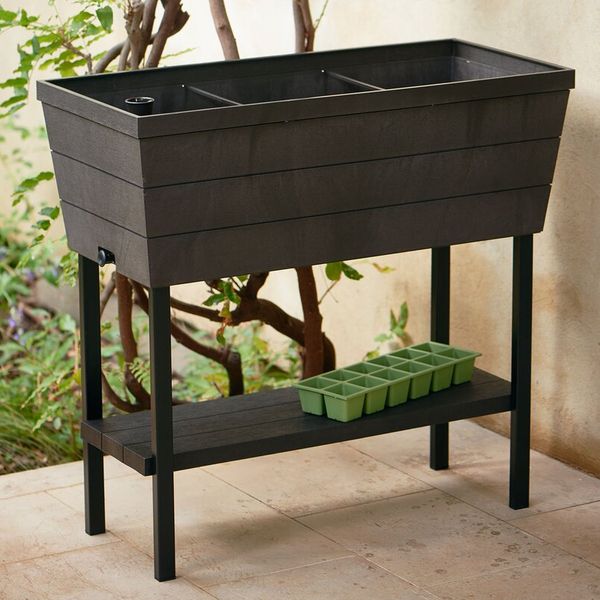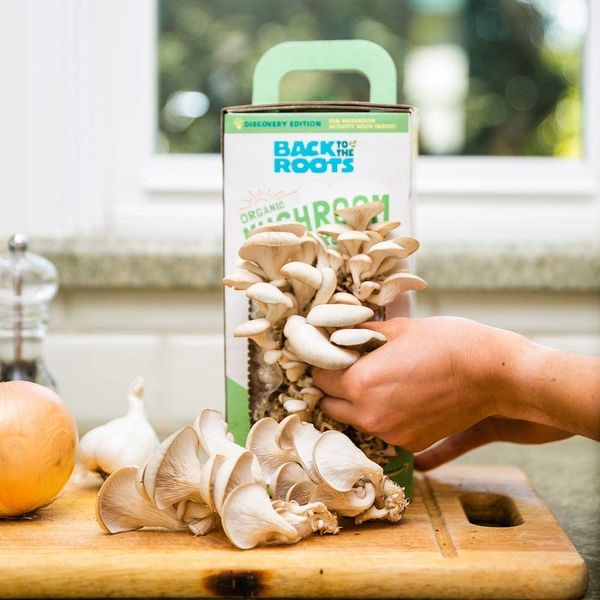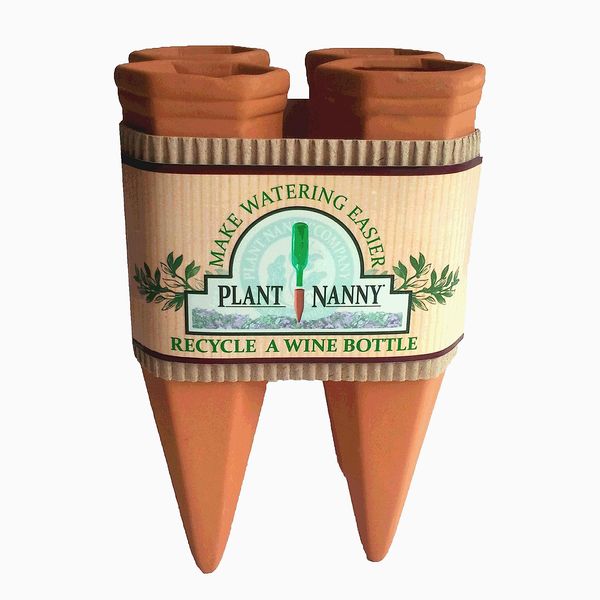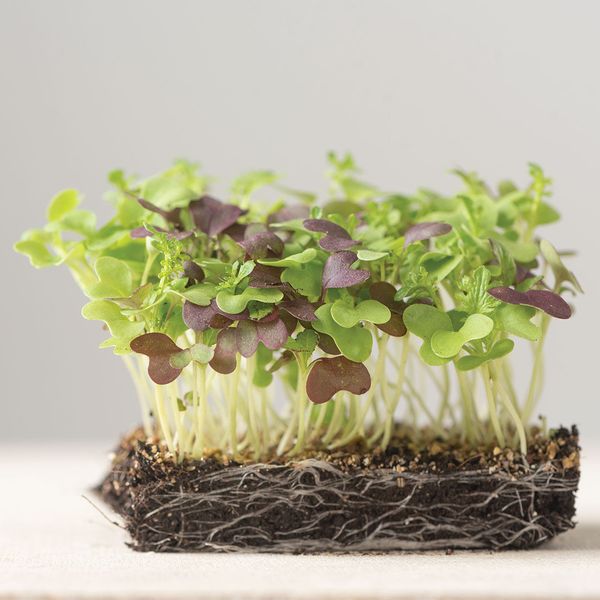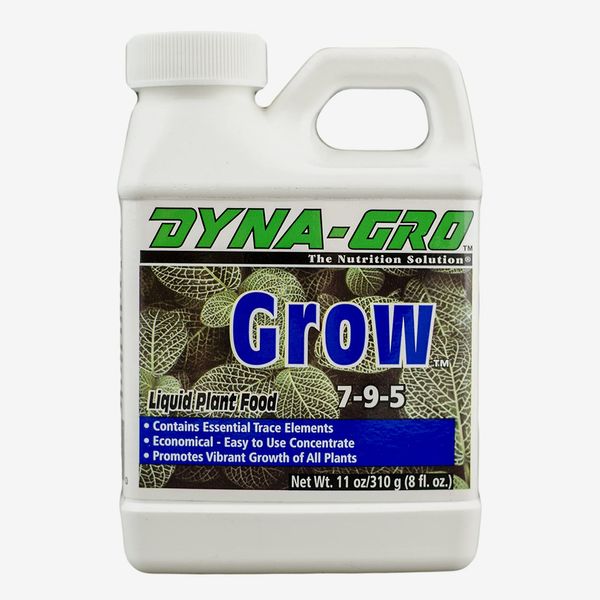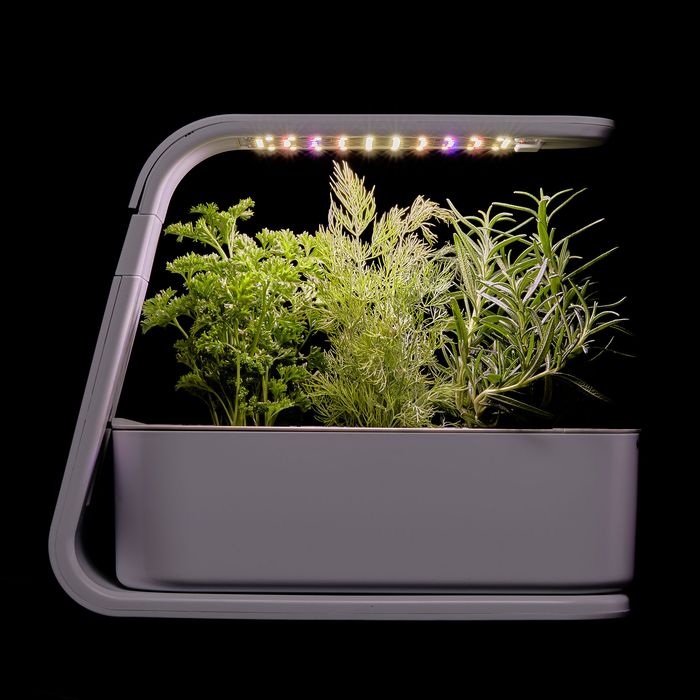
In this article
An indoor-gardening kit is relatively new to the home-appliance canon, which always makes me wonder if a product is here to stay or if it’s going to go the way of the electric can opener. But after using one for three years, I’m a convert. It’s really useful as insurance that I’ll always have fresh herbs — it’s like a tiny farmers’ market stand in my kitchen — and as an amateur gardener, I love that I can also use it to start seedlings. Before getting a smart garden, I tried growing herbs in pots with mixed success: “Generally, city kitchens do not have the full sun required to keep herbs alive,” says Sera Rogue, owner of Brooklyn gardening company Red Fern. “The roots of herbs are somewhat simplistic. They require daily watering.”
Most indoor-garden kits use either a self-watering or hydroponic system to grow plants. I started with a self-watering system — the Click-and-Grow model — and after years of testing, I’d avoid it in favor of a hydroponic system. In a self-watering system, roots grow in soil, and a wick supplies water from a reservoir as it dries out. Growth maxes out once the nutrients in the soil pod are depleted, and since the water in these systems doesn’t circulate, they’re also vulnerable to mold and microorganisms. (Self-watering pots can be great for houseplants, especially plants that are hard to water regularly — one of my succulents on a hard-to-reach shelf is very happy in this Greenery Unlimited model.)
In a hydroponic system, roots grow in a tank of water enriched with fertilizer. Your plants have more room to stretch out, and since you’ll be refilling the fertilizer, you have more flexibility with how and when to feed them. Hydroponics can be dirt cheap (no pun intended) — if you want to DIY it, it can be as simple as drilling holes in a food-grade plastic tub, filling it with a fertilizer solution, and waiting (if you’re curious, that’s called the Kratky method). Hard-core plant people love the control offered by DIY systems, but the work involved can be a barrier to entry for the casual kitchen gardener. It’s too much for me; maybe I would have graduated to grow lights and oxygen pumps eventually, but I love having an indoor garden automate out some of the work.
In her earlier reporting, Strategist senior writer Liza Corsillo consulted several experts in all things plants, including the director of horticulture at the Horticultural Society of New York and the owner of a New York hydroponics store, and tested four models herself. I’ve tested five models in my home over the last two years, experiencing the highs (endless herb butter, bumper crops of Thai basil) and the lows (a mold problem that killed off a generation of seedlings) to help you find the best indoor-garden kit for your kitchen. In this guide, I’m looking for a happy medium between the essentials — a grow light, a tank with a pump to circulate water, and components that come apart for easy cleaning — and some nice-to-have extras, all at a reasonable price. There is a tradeoff between more automation and less customizability, but even the lowest-maintenance options on this list will vastly expand what you can grow.
What we’re looking for
Size and capacity
Many kits on our list come in a range of configurations and sizes. Many smart gardens measure by “pod,” or how many Keurig-style cups containing seeds and a growing medium the appliance can fit. Sizes range from a three-pod garden smaller than a toaster to a multitiered, bookshelf-sized console. Some DIY options are modular, allowing you to add more space for plants as your needs change, and others have variable heights with lights that raise or lower throughout the grow cycle. The right size depends on how much space you have and how quickly you go through produce. Even a three-pod garden, at its peak, produced more herbs than I knew what to do with, so I’m not eliminating any options for being too small or too large.
Microbe management
Growing herbs creates an environment other things want to grow in — namely, algae and mold. While a bit of green slime on the surface of your soil is fine, I’m favoring kits with components that help keep microorganisms in check. The most important is a pump to oxygenate water, which helps prevent algae. Some models also have opaque covers for unused slots, which also prevents algae growth. An indoor garden also should be easy to take apart and clean between cycles — it’s essential for keeping mold at bay.
Ease of use
Indoor-garden kits simplify the process of growing plants by automating or streamlining things that are labor-intensive, messy, or nonintuitive, like sticking to a watering schedule or monitoring light levels. Still, no product can entirely eliminate the need for maintenance, whether that’s refilling the water tank or cleaning out a smart garden between uses. I’m favoring systems that make plant care as straightforward, foolproof, and stress-free as possible. That consideration includes setup time — which, in my experience, can range from just a couple of minutes to a two-hour wild-goose chase trying to connect a grow house to an app — and clear, easy-to-follow instructions.
Higher-maintenance gardens do offer more control and versatility, which may be appealing for experienced gardeners — plus, they tend to be cheaper in the long run than models with more automation. For gardens that require extra work, I’m also evaluating whether the extra work translates to an increase in output and quality.
Best indoor-garden kit overall
Capacity: 3 to to 24 pods | Microbe management: Includes all-purpose fertilizer and pump | Maintenance: Low
AeroGarden’s smart garden, first recommended to us by George Pisegna, deputy director and chief of horticulture at the Horticultural Society of New York, checks all of my boxes: It comes in a range of counter-friendly sizes; contains a pump to circulate water; comes with fertilizer; and produces a prodigious quantity of healthy, tasty herbs even in the brand’s smallest model, the three-pod AeroGarden Sprout. I preferred it to the Click & Grow Smart Garden 3, which I’d had for about a year — the AeroGarden Sprout is smaller, less expensive, and grows larger and healthier plants, and the garden has fewer problems with algae and mold.
I tested the Sprout, an earlier version of the six-pod AeroGarden Harvest, and the new Harvest 2.0 for this article. All models took almost no time to set up. Maintenance is similarly straightforward: Depending on the model, a light or LED display will remind you when to refill water and replenish “plant food,” a synthetic fertilizer with an NPK ratio of 4-3-6 that is included in the kit. (You can also use any water-soluble fertilizer with similar nutrient levels — I’ve been using Maxsea Plant Food and my herbs love it.) The tank’s components come apart easily for cleaning, so even if you do develop a mold problem, the system can be thoroughly cleaned out without digging Q-tips into nooks and crannies.
The Harvest’s design can lead to crowding — pods are spaced close together, which can lead to some taller, bushier plants blocking light from shorter ones — but that’s manageable enough by arranging plants by height or growing fewer plants at once. I’ve heard some complaints about its brightness at night, and there is a fix: The LED grow light is on an automatic light cycle of 15 hours on and nine hours off that begins when you plug it in, so to avoid the light burning at night, you can reset the system about 15 hours before you want it to turn off. (For example, if your bedtime is 10 p.m., reset it at 7 a.m.) All told, I’ve found it to be the simplest, fits-everyone kit for growing plants indoors, useful for new and experienced gardeners alike.
Best upgrade indoor-garden kit
Capacity: 8 to 36 pods | Microbe management: Includes two fertilizers, pH balancer, filter, and pump | Maintenance: Medium
If you have a bit more time and space to devote to your indoor-gardening experiments, Rise Gardens is a great upgrade option, a favorite of mine and of Strategist senior writer Liza Corsillo, who says she was “blown away by the variety of different vegetables (and sheer volume of food) we could grow” in the brand’s larger garden (below). I’ve used it to grow generations of produce — basil, arugula, lettuce, tatsoi, cabbage — which taste fresher and more flavorful than the produce I buy at the grocery store. When Corsillo ran a blind taste test of the basil produced by four kinds of smart gardens, Rise Gardens came in first place.
The Rise Gardens kit is higher-maintenance than AeroGarden’s system, though instructions on the app make tasks fairly straightforward. When it arrived, it took about half an hour to set up, and it requires weekly maintenance — adding fertilizer and a pH balancer to the tank and refilling water. Pods germinate for a week or two in a separate container before you move them to the garden; I’ve gotten better results when I keep a close eye on seedlings during this stage. The Rise Gardens grows larger plants than my AeroGarden Sprout, and since the slots are more widely spaced, there’s less crowding and it’s easier to see how each plant is doing. As with any smart garden, I need to occasionally perform aggressive pruning to keep taller plants from overpowering shorter ones. (That can be a good excuse to make pesto or herb butter.)
These are all things I love about gardening, and of the kits I tested, I’ve learned the most about the plants I’ve grown from the Rise Gardens system. It’s the one I kept after my energy bill could not justify running four smart gardens simultaneously. It isn’t a set-it-and-forget-it appliance, but if you’re an amateur gardener looking for an entry point into growing herbs and other produce, it’s a great choice.
Best DIY indoor-garden kit
Capacity: 24 starter cubes | Microbe management: Air pump included | Maintenance: High
For experienced gardeners looking for customization, a system of DIY components offers more control. We spoke to experts — Krissie Nagy of garden-design company BK Bumpkin and Lindsey Arnell, the owner of hydroponics store the Grow Room — who recommend the company Hydrofarm’s lights, watering system, and germination station (which comes with a heat pad), which can be used separately or all together. “If you’re trying to start seeds indoors or supplement your ambient lighting, a basic grow kit and a high-quality grow light are all you need,” Nagy says. To circulate water and nutrients to plants, Arnell recommends the brand’s Megagarden system, which pumps water from a lower reservoir through the growing tray. (It’s equipped with a timer, so you can choose when to water.) The kit also includes seed-starter cubes and a pH test kit.
Best indoor-garden kit for starting seeds
Size: 10” x 20” tray | Maintenance: Medium maintenance
If you’re going the DIY route, it’s also helpful to have a domed-lid tray equipped with a grow light to give a little extra help to new seedlings. Arnell recommends this SunBlaster kit, which, in addition to starting new seeds, can also be used to “cater to your humidity-loving diva plants in our dry New York winters.” It’s large enough to fit several plants and includes an LED light that fits neatly onto the top of the plastic lid.
Best wall-planter indoor garden kit
Capacity: 36 planters | Maintenance: High
Another option for indoor gardening is a “living wall” system — a series of planters with a central irrigation system that fills a vertical space with plants. Gennaro Brooks-Church, director of landscaping firm Eco Brooklyn Living Walls calls “visually amazing because they ‘grow’ on the wall.” He recommends this set of 36 planters, which comes with a nine-foot drip-irrigation hose kit. Brooks-Church mentions that it’s important to be diligent about watering: “The one drawback is that these systems dry out fast,” he says.
Best bare-bones indoor garden kit
Size: 32” x 15” x 31” | Maintenance: High
If you have a sunny corner to work with and don’t mind handling planting and fertilizing yourself, this self-watering raised-bed planter is a perennial Strategist favorite. It can fit outside or inside and has a reservoir in the bottom that plants can draw from when needed. A drainage tap provides an outlet for excess water.
Best kit for growing mushrooms
Size: 4” x 3” x 5” | Maintenance: Low
For an indoor-garden kit with truly minimal maintenance and footprint, this grow-at-home mushroom kit is a fun, low-commitment option. “It brings almost instant gratification,” says Rogue — she notes the fungi takes just a few days to grow, and you can use the same kit for more than one crop. Pisegna is also a fan of this kit, but he does warn about keeping your mushrooms out of reach of pets (especially cats) who might munch on them.
Some other indoor-gardening products we’ve written about
Our experts
• Lindsey Arnell, owner of the Grow Room
• Gennaro Brooks-Church, director of landscaping firm Eco Brooklyn Living Walls
• Liza Corsillo, Strategist senior writer
• Krissie Nagy, owner of BK Bumpkin
• George Pisegna, deputy director and chief of horticulture at the Horticultural Society of New York
• Sera Rogue, owner of Red Fern
Additional reporting by Liza Corsillo.
The Strategist is designed to surface the most useful, expert recommendations for things to buy across the vast e-commerce landscape. Some of our latest conquests include the best women’s jeans, rolling luggage, bed sheets, coffee makers, and bath towels. We update links when possible, but note that deals can expire and all prices are subject to change.
Every editorial product is independently selected. If you buy something through our links, New York may earn an affiliate commission.

